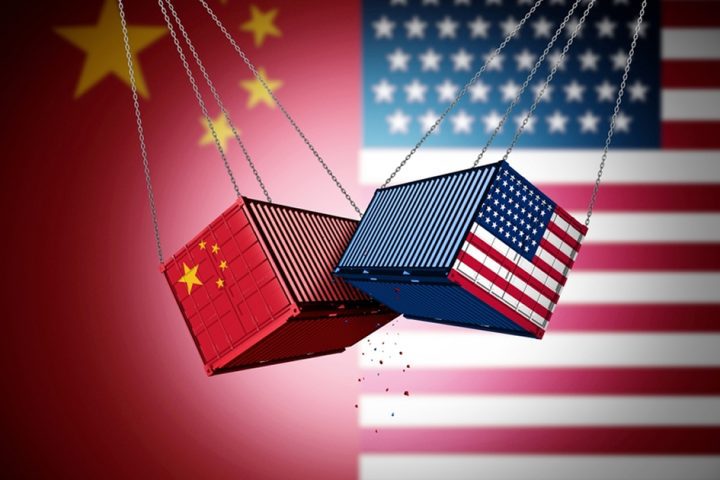The integration of artificial intelligence in warfare has become one of the most consequential developments in modern military strategy, raising fundamental questions about whether this technological revolution will lead to a destabilizing global arms race or create opportunities for unprecedented international cooperation. As nations race to harness AI’s transformative potential while grappling with its profound ethical implications, the trajectory of military AI development will shape both battlefield dynamics and global security architecture for decades to come.
The Scale and Scope of Military AI Development
Artificial intelligence in warfare has evolved from experimental concept to operational reality, with global military AI market value reaching $14.3 billion in 2024 and projected to reach $29.0 billion by 2030, representing a compound annual growth rate of 12.5%. This explosive growth reflects widespread recognition that AI represents a fundamental shift in military capabilities, potentially as transformative as nuclear weapons or gunpowder.
Military AI applications span every domain of warfare, from autonomous drones conducting surveillance and precision strikes to AI-powered decision support systems processing vast amounts of battlefield data in real-time. The U.S. Replicator initiative aims to deploy thousands of small, inexpensive autonomous vehicles—ships, aircraft, and anti-drone devices—by August 2025, demonstrating the scale of current ambitions.
Global investment patterns reveal intense competition among major powers. The United States increased Department of Defense investment in AI, big data, and cloud computing from $5.6 billion in 2011 to $7.4 billion in 2016, while private sector investment reached approximately $70 billion annually. China announced $150 billion in AI investment by 2018, declaring success in its pursuit of global AI leadership and releasing publicly available code for AI missile systems.
Technological capabilities have reached sophisticated levels, with systems demonstrating autonomous decision-making in complex environments. Ukraine’s conflict has showcased AI-powered drone swarms accounting for up to 80% of casualties, while Project Maven enables real-time battlefield command and control through machine learning analysis of drone footage without human involvement.
Evidence of Arms Race Dynamics
The characteristics of a global arms race in military AI are increasingly evident across multiple dimensions of international competition. Military experts acknowledge that “an autonomous weapons arms race is already taking place,” driven by fears that technological gaps could prove decisive in future conflicts.
Competitive pressures intensify as nations recognize AI’s potential military advantages. Russian President Vladimir Putin’s 2017 warning that “whoever becomes the leader in [AI] will become the ruler of the world” captures the existential nature of this competition. China’s 2019 announcement of “Intelligentized Warfare” strategy explicitly aims to use AI to overtake U.S. military capabilities.
Export restrictions demonstrate weaponization of AI development, with the Biden administration imposing severe limitations on advanced NVIDIA chips and GPUs to China to prevent cutting-edge U.S. technology use in military applications. These measures reflect understanding that AI supremacy requires control over critical hardware and software components.
Rapid deployment cycles characterize current development patterns, with military systems moving from research to operational deployment at unprecedented speed. OpenAI removed blanket bans on military use from its usage policies in January 2024, while Microsoft pitched DALL-E models to the Department of Defense for battlefield management system training.
Regional proliferation extends beyond major powers, with countries like Turkey, Iran, and smaller nations developing affordable drone technologies that challenge traditional military hierarchies. This democratization of lethal autonomous capabilities creates additional destabilizing dynamics as sophisticated weapons become accessible to non-state actors.
Technological Drivers and Military Advantages
Artificial intelligence in warfare offers compelling military advantages that fuel continued investment and development. AI systems can operate continuously in hostile environments, process information at superhuman speeds, and adapt to changing battlefield conditions without human fatigue or emotional decision-making limitations.
Operational effectiveness improvements include enhanced surveillance and reconnaissance through high-resolution sensors and multispectral analysis, predictive maintenance reducing equipment downtime, and precision targeting minimizing collateral damage while maximizing mission success rates. AI-enabled systems can coordinate complex multi-domain operations across land, sea, air, space, and cyber domains simultaneously.
Force multiplication effects allow smaller military forces to achieve disproportionate impacts through swarm technologies, autonomous logistics systems, and AI-powered command and control networks. The U.S. military’s assumption that “AI is integral to success on a modern battlefield” reflects widespread recognition of these transformative capabilities.
Electronic warfare advantages emerge from AI’s ability to process electromagnetic spectrum data in real-time, enabling rapid adaptation to enemy countermeasures and autonomous development of new attack vectors. China’s focus on “intelligence dominance” and “cognitive warfare” demonstrates AI’s potential for psychological and information operations.
Cost-effectiveness considerations drive adoption as autonomous systems potentially reduce personnel costs, training requirements, and operational risks to human soldiers. The economics of AI warfare favor early adopters who can achieve technological superiority before opponents develop effective countermeasures.
International Regulatory Efforts and Cooperation Initiatives
Despite competitive pressures, significant collaborative future possibilities exist through international regulatory frameworks and cooperative initiatives. The 2023 Political Declaration on Responsible Military Use of Artificial Intelligence and Autonomy provides a normative framework addressing military AI use, with endorsement from over 60 countries including major NATO allies.
United Nations initiatives include the Convention on Certain Conventional Weapons discussions where member states debate AI warfare limits. The 2024 UN General Assembly resolution on lethal autonomous weapons systems, backed by 166 states, mandates comprehensive reporting on humanitarian, legal, security, and ethical challenges posed by autonomous weapons.
Multilateral cooperation efforts demonstrate potential for collaborative approaches. NATO’s six principles for responsible AI use emphasize human oversight and international humanitarian law compliance, while recognizing the need to maintain technological competitiveness. The alliance balances European “legally cautious” approaches with American “technologically pragmatic” perspectives.
Regional frameworks emerging include the EU’s human-centric, risk-based AI regulation model through its AI Act, which excludes military applications but may influence future military AI governance. European Parliament resolutions call for preventive regulation and international bans on lethal autonomous weapons without human control.
Industry engagement includes private sector participation in developing ethical guidelines and technical standards. Major technology companies increasingly recognize responsibilities for dual-use technologies and collaborate with governments on responsible development practices.
Ethical and Legal Challenges
Artificial intelligence in warfare presents unprecedented ethical dilemmas that complicate both competitive and cooperative approaches. Fundamental questions about human agency, accountability, and proportionality in lethal force decisions challenge existing legal and moral frameworks.
Accountability gaps emerge when autonomous systems make life-and-death decisions without clear human responsibility chains. Even algorithms capable of determining legal compliance under international humanitarian law cannot assess ethical considerations or context-dependent moral obligations that human judgment provides.
International humanitarian law applications remain contested, with debates over whether existing Geneva Convention frameworks adequately address autonomous weapons capabilities. The requirement to distinguish between combatants and civilians becomes complex when AI systems operate at speeds and scales beyond human comprehension.
Proliferation risks include potential access by non-state actors, terrorist organizations, and authoritarian regimes that may not respect international law constraints. The dual-use nature of AI technologies makes export controls and technology transfer restrictions difficult to implement and enforce effectively.
Escalation dynamics raise concerns about AI-powered decision-making potentially triggering conflicts through misinterpretation, system malfunctions, or adversarial manipulation. James Johnson’s analysis of potential accidental nuclear war scenarios precipitated by AI-driven intelligence and “turbo-charged by AI-enabled bots, deepfakes, and false-flag operations” illustrates these risks.
Divergent National Approaches
National artificial intelligence in warfare strategies reveal significant differences in balancing competitive advantages with collaborative opportunities. These variations reflect distinct political systems, strategic cultures, and relationships with international institutions.
United States approaches emphasize technological superiority while maintaining alliance cooperation. Department of Defense Directive 3000.09 requires human oversight for certain autonomous weapons while enabling development and deployment of others. The U.S. promotes “responsible AI” frameworks that preserve innovation flexibility while establishing basic guardrails.
Chinese strategies focus on achieving decisive technological advantages through state-directed investment and military-civilian fusion policies. The concept of “intelligentized warfare” envisions using AI for “intelligence dominance” and “cognitive warfare” to control adversary decision-making processes, including political leaders and civilian populations.
European perspectives prioritize regulatory frameworks and human rights considerations, with the European Parliament advocating preventive regulation and international autonomous weapons bans. EU approaches emphasize multilateral cooperation and legal precedent-setting over rapid military deployment.
Russian policies pursue asymmetric advantages through AI integration with existing capabilities, particularly in electronic warfare and information operations. Despite international isolation, Russia continues investing in military AI through state programs and private defense contractors.
Developing nations face choices between alignment with major power blocs and pursuit of indigenous capabilities. Countries like India create defense AI councils while participating in international regulatory discussions, seeking to balance modernization needs with ethical considerations.
Pathways to Collaboration
Despite competitive pressures, multiple pathways exist for achieving a more collaborative future in military AI development. These approaches require balancing legitimate security interests with shared risks posed by unregulated autonomous weapons proliferation.
Technical standards development offers opportunities for international cooperation on safety, reliability, and interoperability requirements. Collaborative research on AI verification, validation, and testing methodologies could enhance all participants’ capabilities while reducing accident risks.
Confidence-building measures include information sharing on AI safety research, joint exercises to test human-AI interfaces, and transparency initiatives regarding autonomous weapons development programs. These measures could reduce misperception and miscalculation risks while maintaining competitive positions.
Humanitarian principles provide common ground for cooperation, as all nations have interests in minimizing civilian casualties and preventing indiscriminate weapons proliferation. Collaborative efforts to define and implement “meaningful human control” could establish workable standards for responsible AI deployment.
Economic incentives for cooperation include shared costs of AI safety research, reduced duplication of defensive capabilities, and prevention of economically wasteful arms competition. Coordinated approaches to AI governance could provide more predictable regulatory environments for defense contractors and technology companies.
Crisis management mechanisms could prevent AI-related incidents from escalating into broader conflicts. Joint protocols for responding to autonomous weapons malfunctions, cyber attacks on AI systems, or misunderstanding of AI-powered military activities could enhance strategic stability.
Future Scenarios and Strategic Implications
The trajectory of artificial intelligence in warfare will likely determine whether this technology becomes primarily a source of instability or cooperation. Current trends suggest multiple possible futures depending on policy choices made in the coming decade.
Arms race scenarios involve continued competitive development without effective international constraints, leading to autonomous weapons proliferation, reduced human control over conflict initiation and escalation, and potential AI-triggered crises. This pathway could undermine strategic stability and increase risks of accidental warfare.
Regulatory cooperation scenarios envision successful international frameworks that preserve military AI innovation while establishing meaningful constraints on destabilizing capabilities. This approach could enhance global security while enabling beneficial AI applications for peacekeeping, humanitarian operations, and crisis response.
Fragmented governance scenarios reflect current reality of competing regulatory approaches across different regions and alliance systems. This pathway could produce inconsistent standards, regulatory arbitrage, and continued competition alongside limited cooperation in specific technical areas.
Technological determinism scenarios assume AI development proceeds faster than governance efforts, with technological capabilities determining strategic outcomes regardless of policy preferences. This possibility emphasizes the importance of early intervention to shape AI development trajectories.
Assessment and Recommendations
Artificial intelligence in warfare currently exhibits characteristics of both a global arms race and potential collaborative future, with the ultimate trajectory depending on policy choices being made today. Evidence clearly demonstrates competitive dynamics driving rapid development and deployment of autonomous weapons capabilities across major military powers.
However, significant opportunities exist for international cooperation that could harness AI’s benefits while minimizing destabilizing risks. The key lies in developing governance frameworks that are sufficiently flexible to accommodate legitimate military innovation while establishing meaningful constraints on the most dangerous capabilities.
Current trends suggest that without proactive intervention, competitive dynamics will likely dominate, potentially leading to destabilizing arms race outcomes. The window for establishing effective international cooperation may be narrowing as autonomous weapons capabilities mature and deploy operationally.
Successful collaboration requires recognizing that all nations share interests in preventing AI-triggered conflicts, minimizing civilian casualties, and maintaining some degree of human control over life-and-death decisions. Building on these shared interests while respecting legitimate security concerns offers the best pathway toward a more stable and cooperative future.
The question of whether artificial intelligence in warfare leads to a global arms race or collaborative future remains open, with current evidence supporting both possibilities. The ultimate outcome will depend on whether the international community can develop governance mechanisms that balance competitive pressures with shared security interests, ensuring that this transformative technology enhances rather than undermines global stability.













